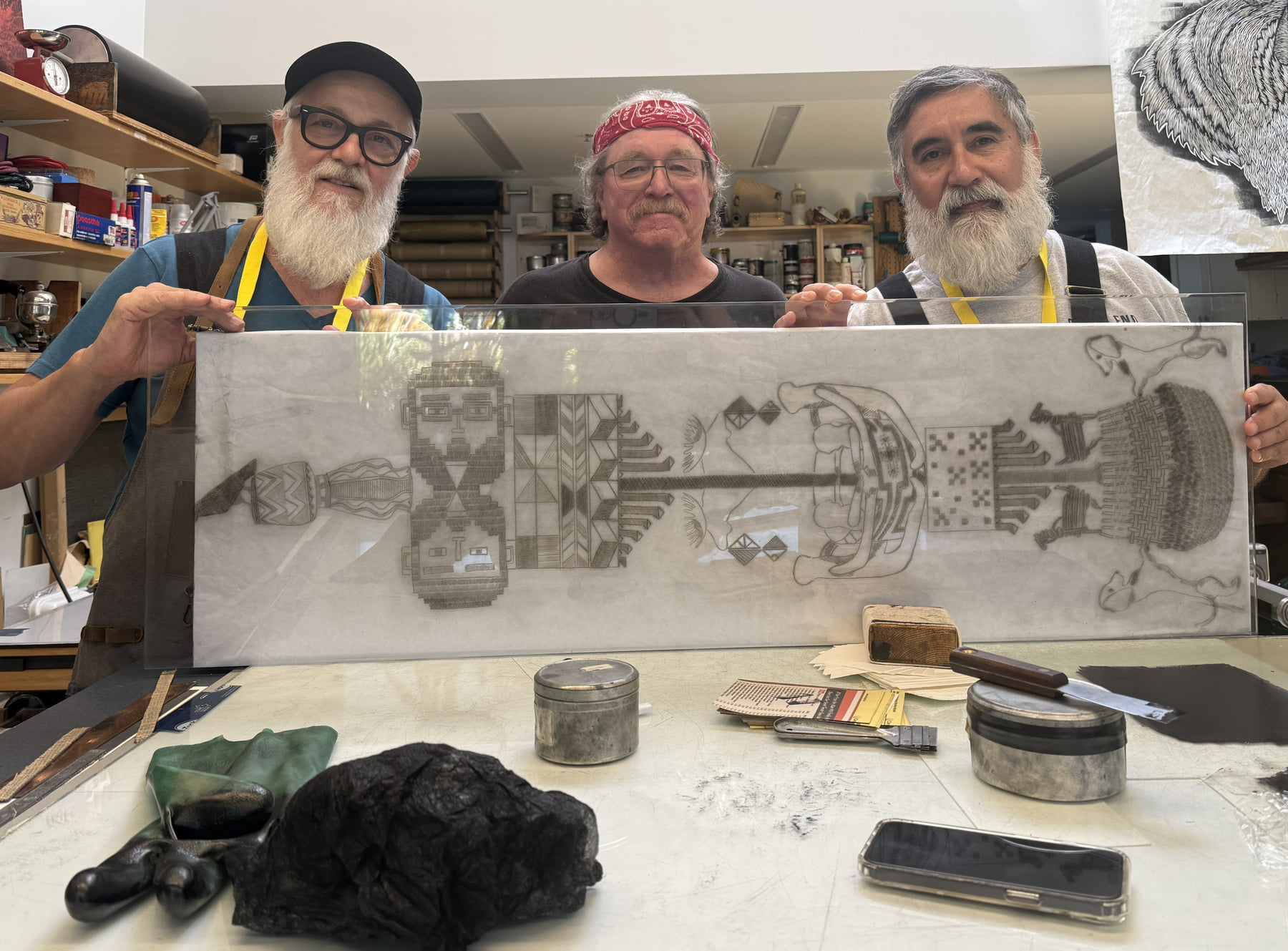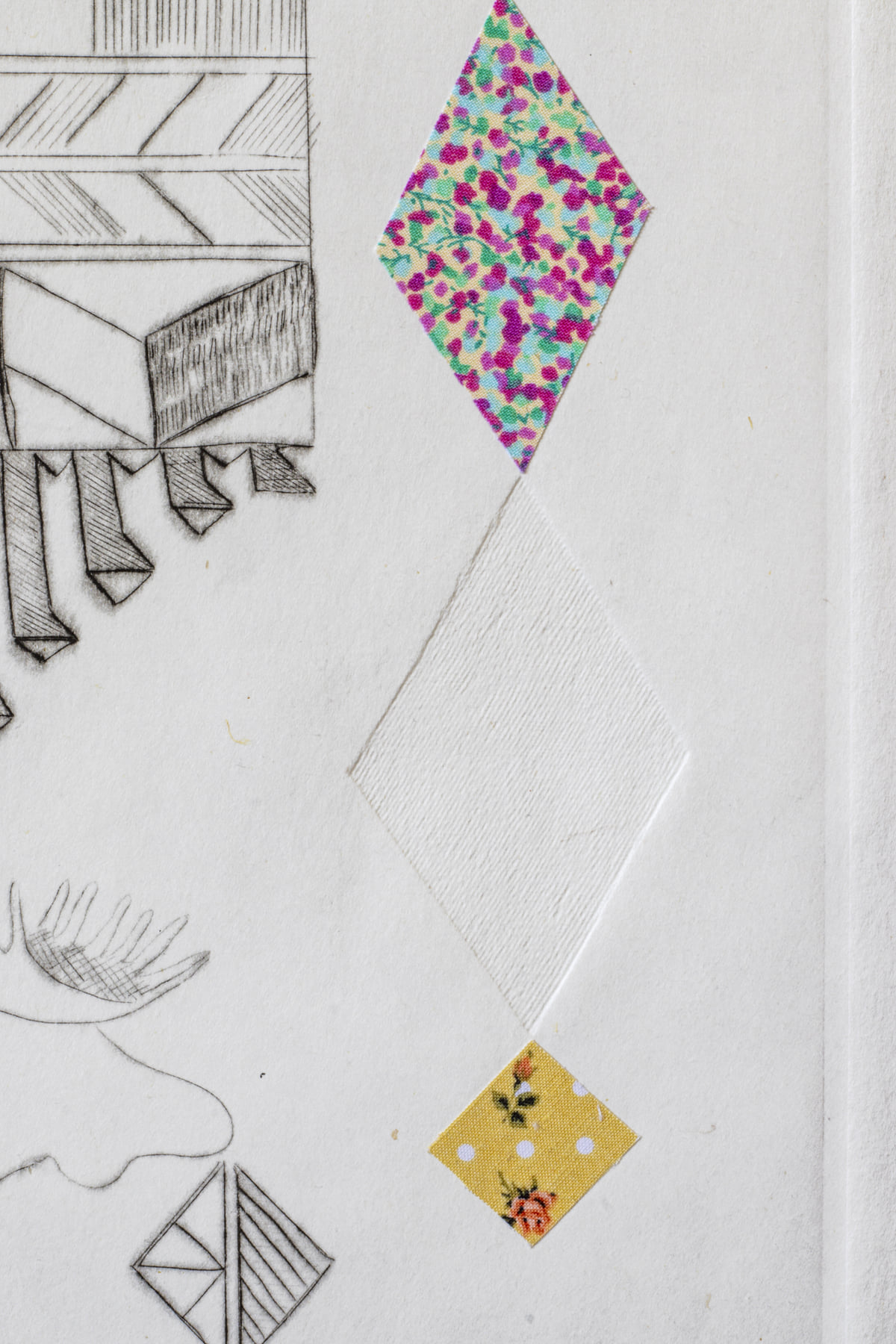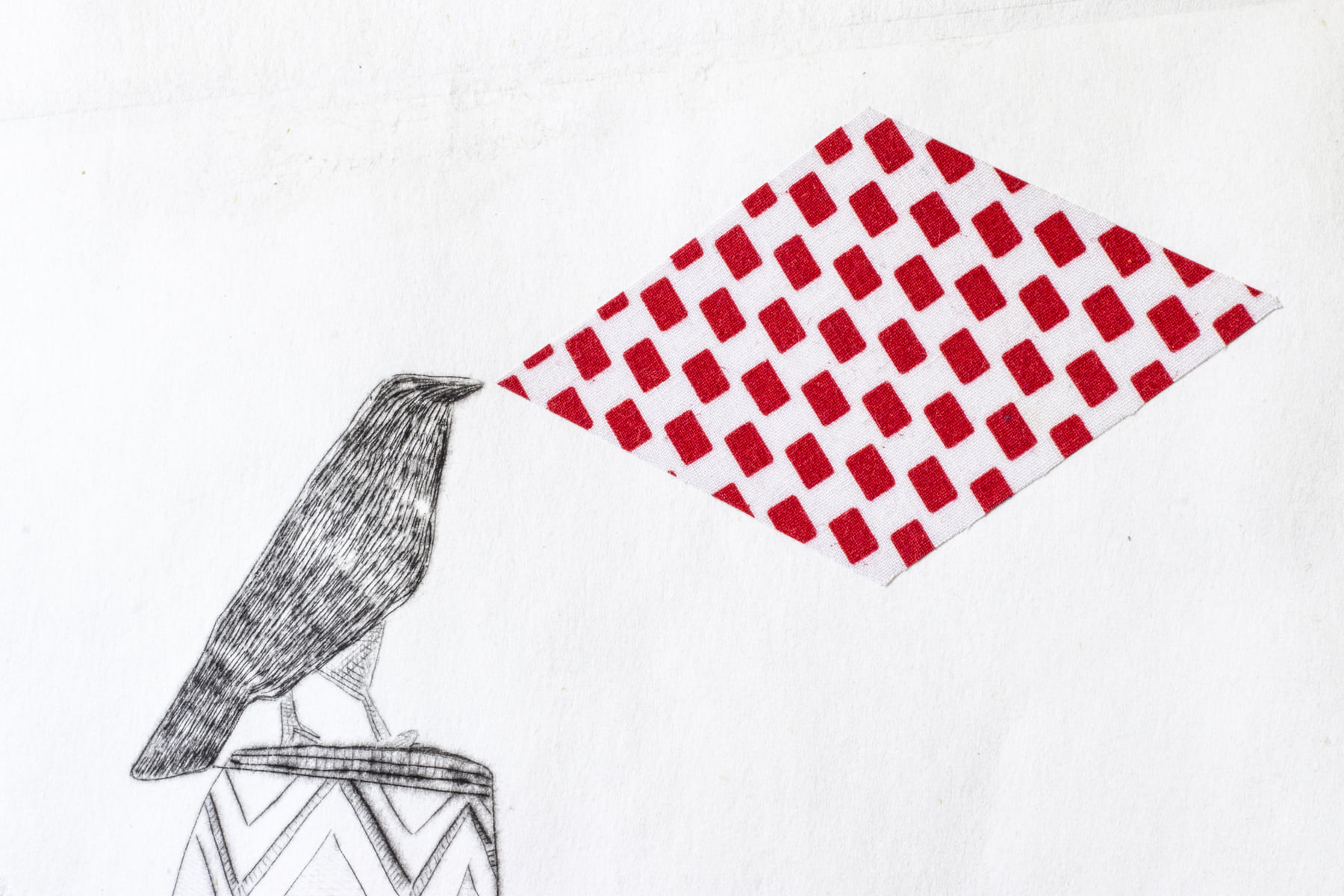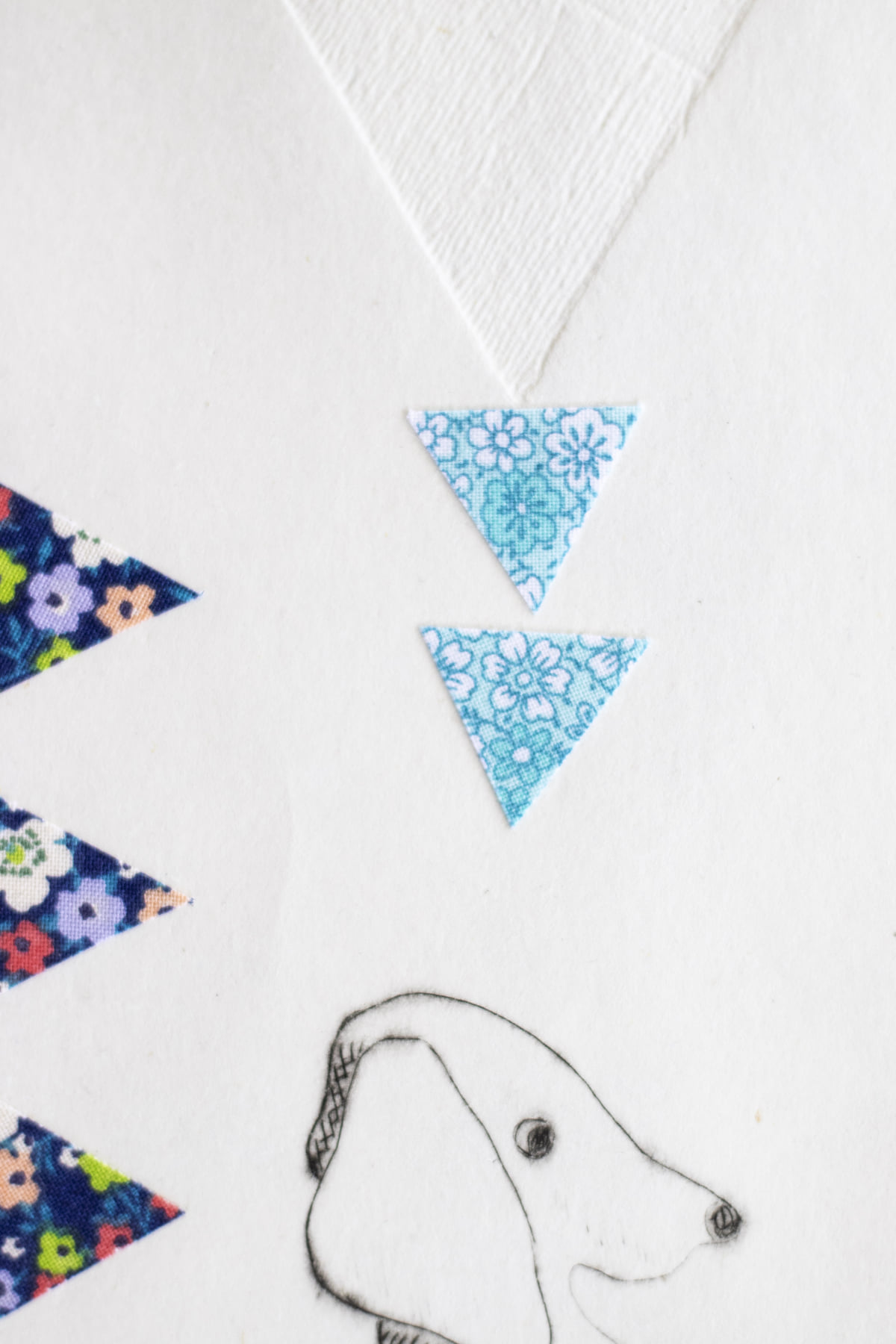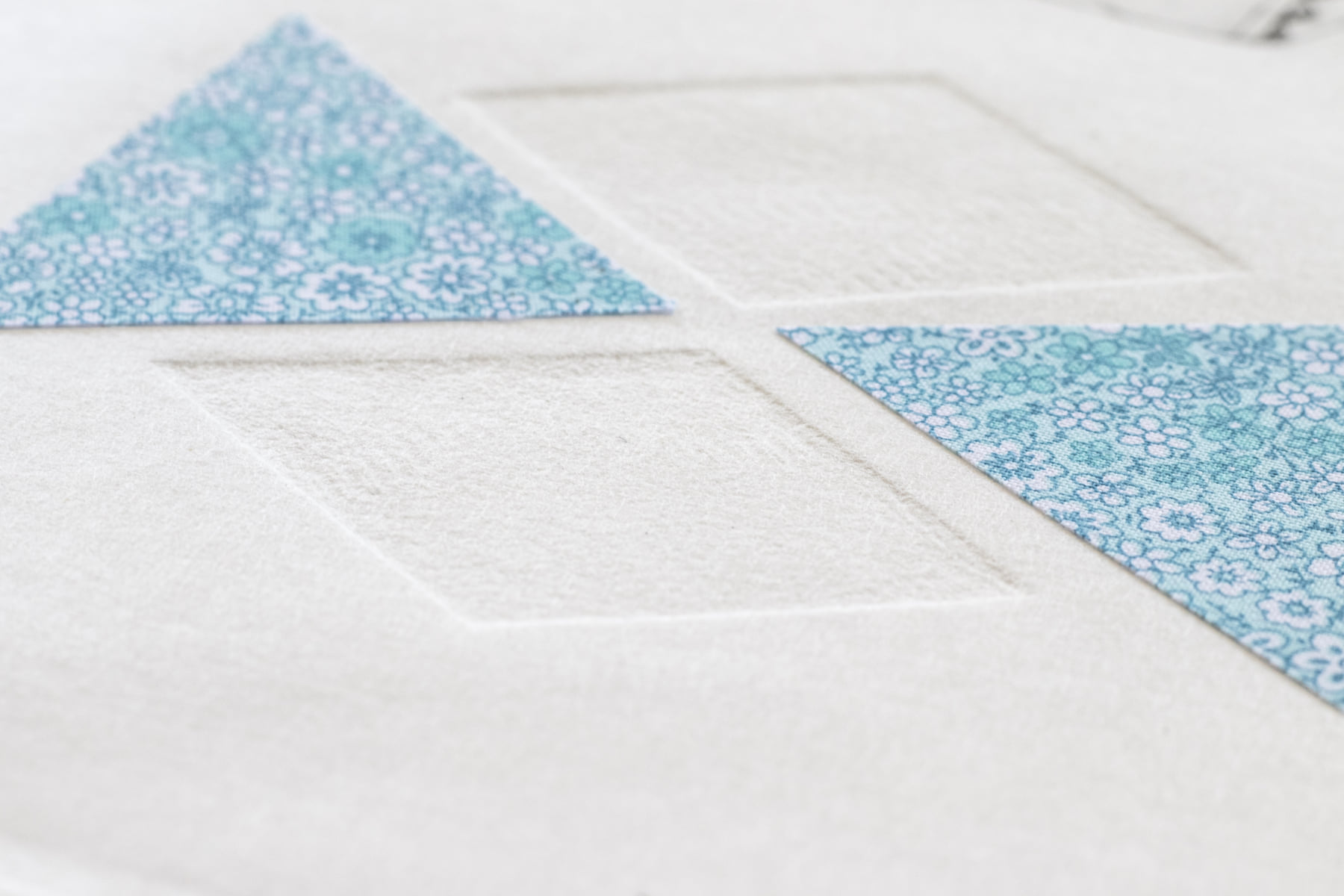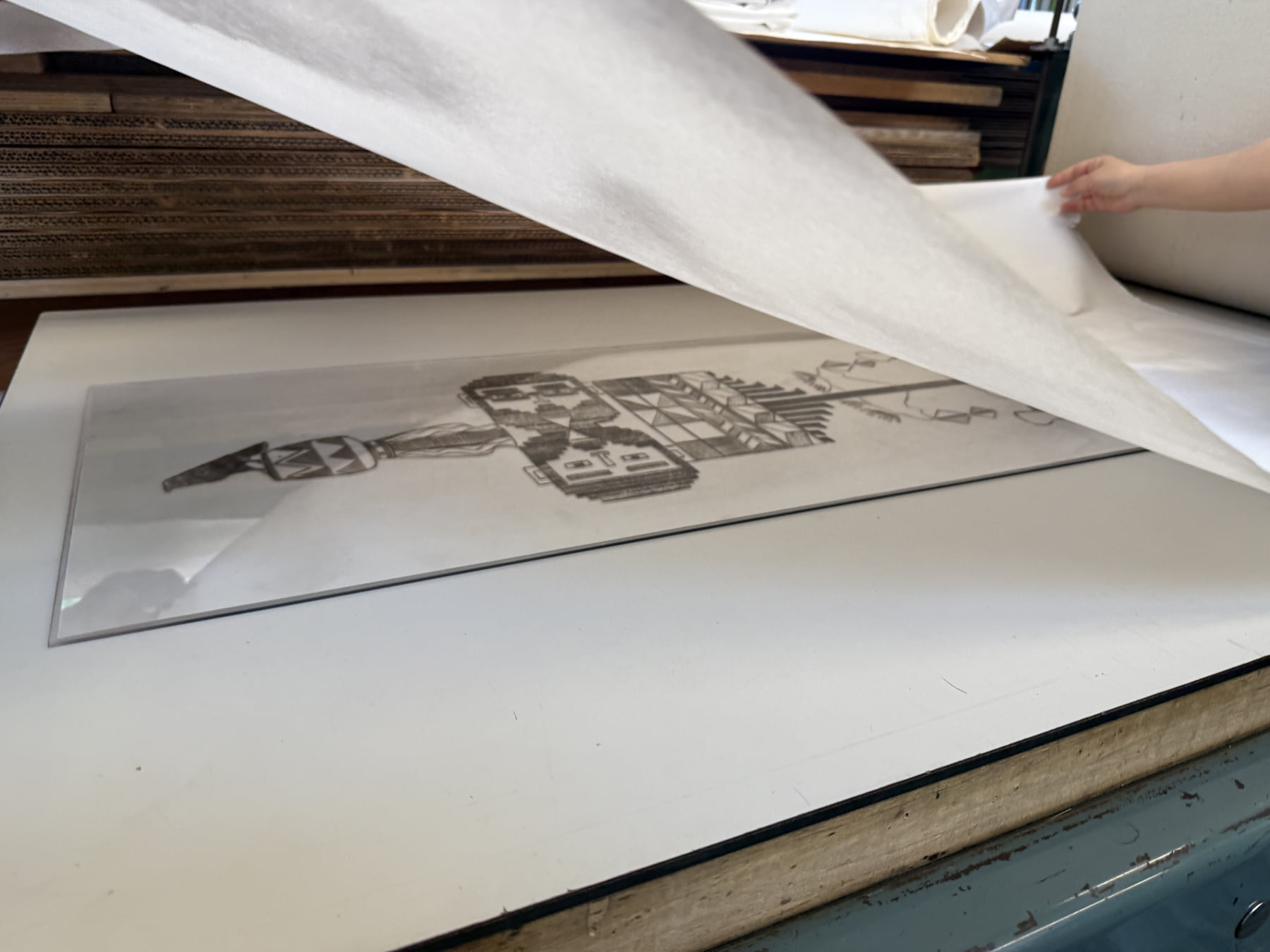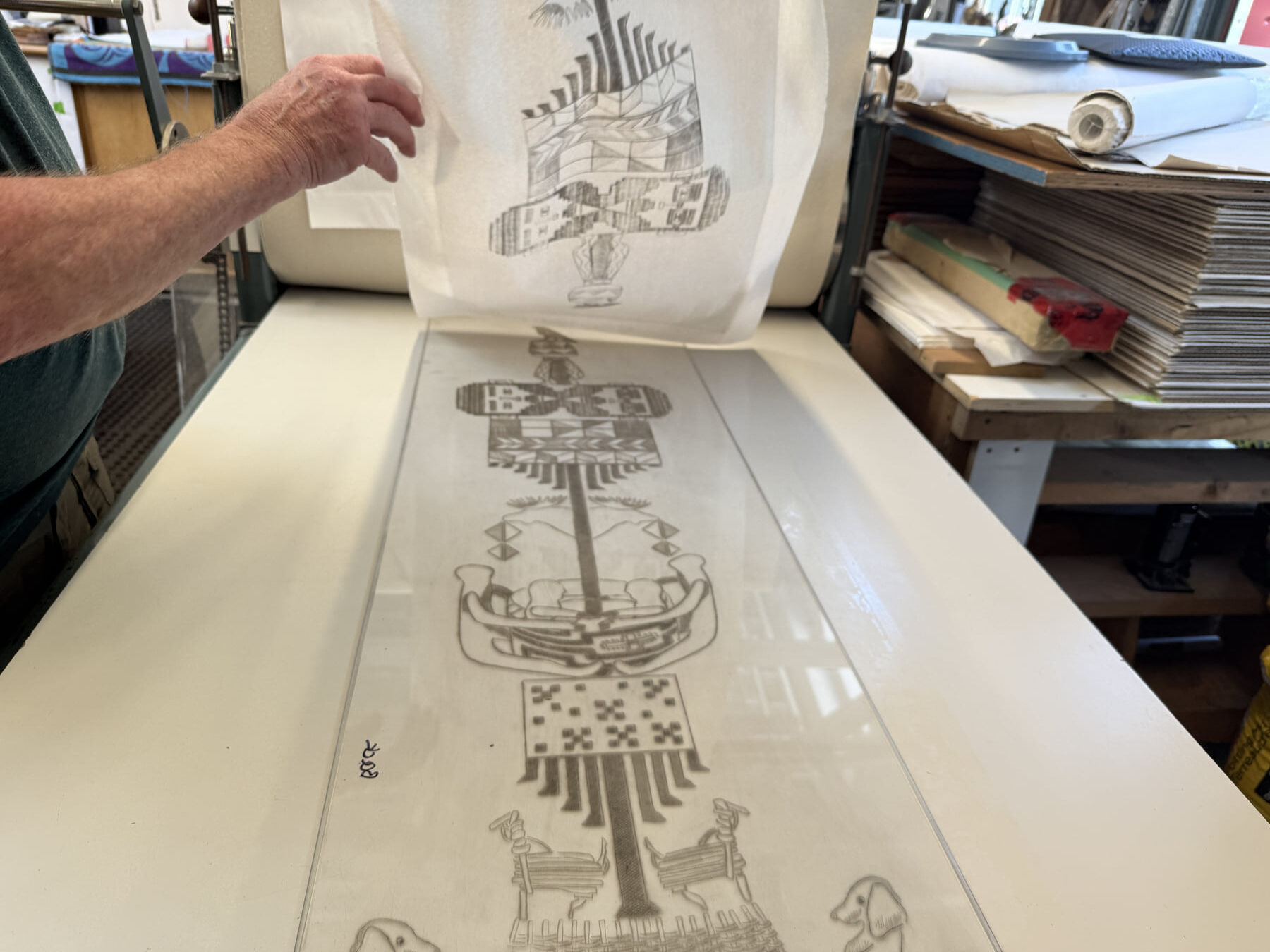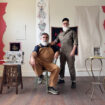The Forest of Life
Chiachio & Giannone, Argentina
Description
View this artwork page in Spanish
Drypoint, embossing, and fabric appliqué on cotton paper
52.5 x 20.5 inches
Edition of 10 + 2
Created in collaboration with New Leaf Editions directed by Peter Braune on Granville Island, Canada, May-June 2025
We work with the representation of a forest, inspired by the forests we encountered during our Vancouver residency. This forest contains a constellation of images that distill our experience as artists in the Vancouver Biennale’s International Artist Residency Program 2025–2026.
The forest serves as a symbol with rich cultural and mythological significance across diverse traditions. Our forest representation emerged as a way to connect the central ideas that guided our research and creative process during our eight-week Vancouver residency. We chose the tree form because it embodies the connection between earth, sky, and living beings, symbolizing life, growth, balance, and interconnection.
At the forest’s base, you can see our two dachshund companions (Chicha Bettina and La Dorado—representing new queer family configurations in contemporary society) supporting a forest that appears contained within a large basket.
This forest of life rests in a woven basket of natural fibers, rendered through various traditional weaving techniques: irregularly divided interlaced stitches, non-interlaced patterns with tight spacing, twill braiding, and plain basketry weaves.
The large basket at our forest’s foundation pays tribute to basket weavers who create extraordinary works using ancestral techniques. While these baskets serve utilitarian, domestic, or ceremonial functions within craft traditions, we regard them as important art forms. We’re drawn not only to their practical purpose but to their impeccable construction using natural fibers and exquisite designs: geometric patterns, natural forms, animals, and human figures. These designs reveal formal and conceptual connections spanning Indigenous peoples of Latin America, the Gee’s Bend quilters, traditional quilting, and modernist painting.
The tree crowns in our forest incorporate geometric designs found in Indigenous textiles—patterns that echo the geometric art traditions present throughout South American cultures. We discovered these motifs in both textiles and murals throughout Vancouver.
Two moose appear behind the tree trunks—animals that, along with bears, have become iconic symbols of North America in popular imagination.
Our intertwined faces, connected by our beards, visualize our presence here: “Nosotros estamos acá / we are here”—the title of our Open Studio.
Baskets and vessels crown this forest, where a raven comes to rest. In many Indigenous traditions, ravens bring daylight and shape the world. This bird, unfamiliar to us before arriving, has become a daily presence during our Vancouver walks through its smaller relative, the crow.
The raven represents transformation and change—possessing deep knowledge of the world’s secrets and the ability to move between states, both physical and spiritual. This mirrors the artist’s capacity to create new worlds, happier places to inhabit, transforming reality into other possibilities.
In Canadian Indigenous cultures, the raven (Corvus corax) holds central significance, embodying creation, intelligence, transformation, and spiritual power. Ravens are understood as creators and messengers between worlds.
